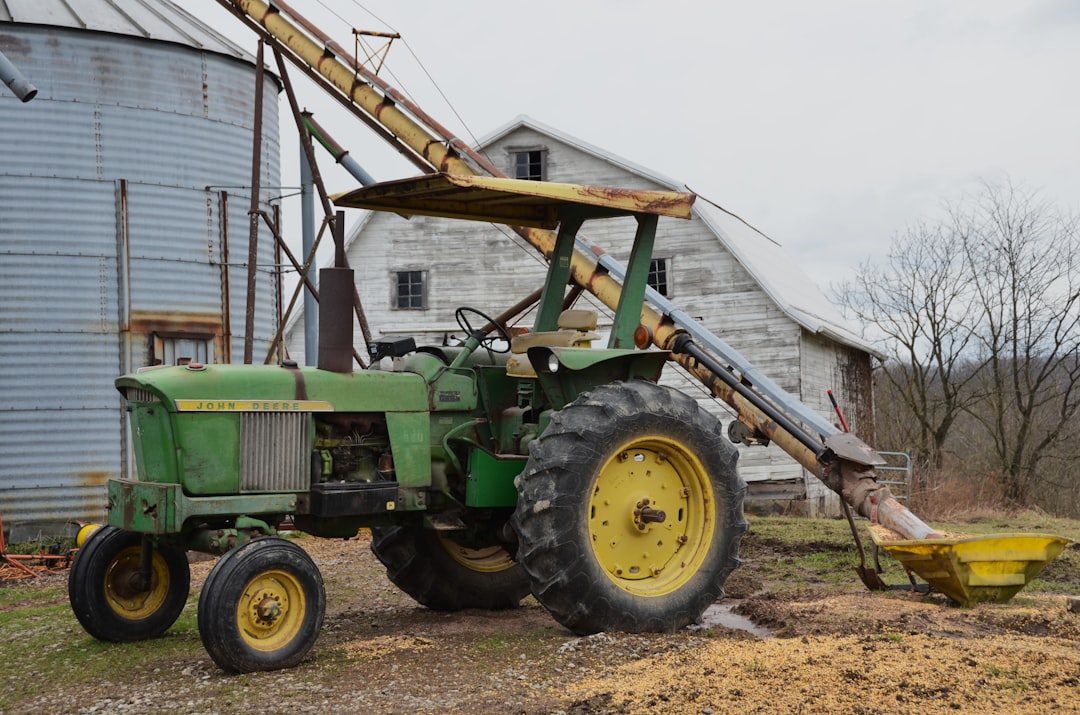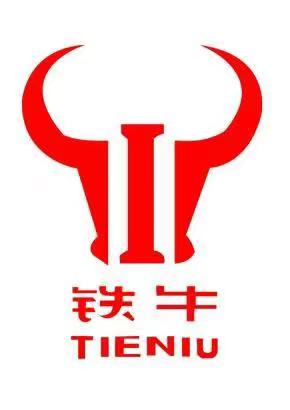Unlocking Agricultural Potential: A Comprehensive Guide to Essential Farm Tractor Attachments
Unlocking Agricultural Potential: A Comprehensive Guide to Essential Farm Tractor Attachments

1. Introduction: The Powerhouse of Modern Farming
In the dynamic world of agriculture, the tractor stands as an undisputed workhorse, but its true power lies in its adaptability. Modern farming demands efficiency, precision, and the ability to perform a myriad of tasks throughout the seasons. This is where farm tractor attachments become indispensable. These specialized tools transform a tractor from a simple vehicle into a multi-functional machine, capable of handling everything from soil preparation and planting to harvesting and livestock management. Investing in the right attachments is not just about expanding your tractor's capabilities; it's about optimizing your entire agricultural operation, boosting productivity, and ensuring sustainable growth.
2. Why Tractor Attachments Are Essential for Farm Efficiency
Tractor attachments are the bedrock of efficient farm management. They save invaluable time and labor, performing tasks that would otherwise require significant manual effort or multiple dedicated machines. For instance, a front-end loader can lift and transport heavy materials like feed, hay bales, or even small implements, drastically reducing physical strain and speeding up logistics. Attachments allow for year-round utility of a single tractor, making it a highly cost-effective investment. They enable specialized tasks, improve crop yield through better soil management, and enhance overall operational fluidity, directly contributing to a farm's profitability.
3. Understanding Different Types of Farm Tractor Attachments
The diversity of farm tractor attachments is vast, each designed for specific agricultural operations. Selecting the right type depends heavily on the tasks at hand, the terrain, and the tractor's capacity. Here are some primary categories:
- Material Handling Attachments: These include front-end loaders, pallet forks, and grapples, essential for moving heavy loads, stacking hay, or clearing debris. Pallet forks, for example, are crucial for lifting and transporting palletized goods with ease, vastly improving logistics efficiency on the farm.
- Tillage and Soil Preparation Attachments: Plows, tillers (rototillers), harrows, and cultivators break up and churn soil, preparing seedbeds and controlling weeds. Each type has a specific purpose for different soil conditions and desired outcomes.
- Planting and Seeding Attachments: Seeders, planters, and drills ensure accurate and efficient planting of various crops, optimizing spacing and depth for optimal growth.
- Harvesting Attachments: For specialized crops, various harvesting attachments like balers (for hay or silage), mowers, and combines (though often standalone, smaller versions or specialized attachments exist for certain tractors) are vital for efficient collection.
- Maintenance and Landscaping Attachments: Post-hole diggers, shredders, dozers, and box blades are used for maintaining farm infrastructure, digging holes, clearing brush, or leveling land.
4. Key Factors to Consider When Choosing an Attachment
Choosing the right tractor attachment involves several critical considerations to ensure compatibility, efficiency, and safety. A mismatch can lead to poor performance, equipment damage, or even accidents.
- Tractor Specifications & Compatibility: Always check your tractor's horsepower (HP), hydraulic flow, lift capacity, and hitch type (e.g., 3-point hitch, Quick Attach, Skid Steer Universal) to ensure it can efficiently operate the attachment.
- Weight Capacity & Load Requirements: Understand the maximum weight your tractor and the attachment can safely handle. Exceeding limits can damage the tractor's chassis, hydraulics, or the attachment itself.
- Intended Use & Application: Different tasks require specific features. For example, lifting heavy logs requires heavy-duty grapple forks, while delicate seeding requires precision planters. Consider the types of materials you'll be handling and the specific jobs you need to accomplish.
- Durability & Material Quality: Look for attachments made from high-quality, durable materials, such as forged steel for critical components, to ensure longevity and resistance to wear and tear.
- Safety Features: Ensure the attachment has adequate safety guards, clear operating instructions, and mechanisms to prevent accidental disengagement.
- Ease of Attachment/Detachment: Quick-attach systems can significantly reduce downtime when switching between tasks.
- Warranty & Support: A good warranty and accessible manufacturer support indicate product confidence and provide peace of mind.
5. Essential Attachments for Every Farm (Beyond Pallet Forks)
While pallet forks are incredibly useful, a diversified set of attachments ensures comprehensive farm operations. Here are a few must-have categories:
5.1. Front-End Loaders
Arguably one of the most versatile attachments, a front-end loader transforms your tractor into a powerful lifting and moving machine. Ideal for digging, grading, backfilling, and handling bulk materials like gravel, soil, and feed. Many other attachments (like buckets, grapples, and yes, pallet forks) mount onto the loader itself, further extending its utility.
5.2. Rotary Tillers (Rotavators)
For effective soil preparation, especially for gardens or smaller fields, a rotary tiller is invaluable. It breaks up and aerates soil, incorporates organic matter, and prepares a fine seedbed in a single pass, saving time and fuel.
5.3. Finish Mowers & Rotary Cutters
Essential for maintaining fields, pastures, and large grassy areas. Finish mowers provide a clean, manicured cut for lawns or parks, while heavy-duty rotary cutters (bush hogs) can tackle overgrown brush, weeds, and small saplings, keeping fields clear and manageable.
5.4. Post-Hole Diggers
Whether for fencing, planting trees, or general construction, a post-hole digger attached to your tractor's 3-point hitch makes quick work of creating precise holes of varying diameters. This greatly reduces manual labor and increases efficiency for large-scale fencing projects.
5.5. Box Blades
Perfect for leveling, grading, spreading materials (like gravel or soil), and backfilling. Box blades are indispensable for maintaining driveways, preparing building sites, or general land management tasks.
6. Safety First: Operating Tractor Attachments Responsibly
Operating farm machinery with attachments carries inherent risks if proper safety precautions are not followed. Adhering to safety guidelines protects operators, bystanders, and equipment.
- Read the Manuals: Always consult both the tractor and attachment operator manuals. They contain vital information on safe operation, maintenance schedules, and specific warnings.
- Pre-Operation Checks: Before each use, inspect the attachment for any loose bolts, worn parts, leaks, or damage. Ensure all pins and quick-attach mechanisms are securely fastened.
- Proper Ballasting: Always ballast your tractor appropriately when using heavy attachments, especially front-end loaders, to maintain stability and prevent rollovers. This often means adding weight to the rear for front-mounted attachments.
- Maintain Visibility: Keep the attachment lowered when traveling. Ensure your line of sight is clear, especially when turning or operating in confined spaces.
- Clear Work Area: Before operating, ensure the work area is clear of people, animals, and obstacles. Mark any underground utilities.
- PTO Safety: Be extremely cautious around the Power Take-Off (PTO) shaft. Ensure guards are in place and never approach a spinning PTO.
- Slow and Steady: Operate at appropriate speeds for the terrain and task. Avoid sudden turns or movements that could destabilize the tractor.
7. Maintenance Tips for Longevity and Performance
Regular and proper maintenance is crucial for extending the lifespan of your tractor attachments, ensuring optimal performance, and preventing costly breakdowns.
- Regular Cleaning: After each use, clean off dirt, mud, and debris, especially from moving parts and hydraulic lines, to prevent corrosion and wear.
- Lubrication: Periodically grease all pivot points, bearings, and moving components as recommended by the manufacturer. Proper lubrication reduces friction and extends component life.
- Inspect for Wear and Damage: Routinely check blades, teeth, chains, hydraulic hoses, and electrical connections for signs of wear, cracks, or damage. Replace worn parts promptly.
- Tighten Fasteners: Vibrations can loosen bolts and nuts. Regularly check and tighten all fasteners to prevent parts from falling off or misalignment.
- Fluid Levels: For hydraulic attachments, regularly check hydraulic fluid levels and cleanliness. Contaminated or low fluid can cause significant system damage.
- Storage: Store attachments in a dry, covered area when not in use to protect them from weather elements, which can cause rust and deterioration.
8. Innovations and Future Trends in Farm Tractor Attachments
The agricultural sector is constantly evolving, driven by technological advancements. Future farm tractor attachments are likely to focus on increased automation, precision, and sustainability.
- Smart Attachments: Integration of sensors and GPS for real-time data collection (e.g., soil moisture, nutrient levels) and automated adjustments, leading to precise farming practices.
- Electric/Hybrid Attachments: As battery technology improves, more attachments might be powered electrically or become hybrid, reducing reliance on fossil fuels and lowering emissions.
- Robotics & AI: Autonomous attachments that can operate independently or with minimal human oversight, further enhancing efficiency and addressing labor shortages.
- Modular & Multi-functional Designs: Attachments designed for even greater versatility, potentially combining several functions into one unit (like the 'spork' mentioned for pallet forks and bale spikes ), reducing the need for multiple specialized tools.
- Enhanced Durability & Lightweight Materials: Development of stronger, lighter materials will allow for attachments with higher capacities without overly stressing the tractor, improving fuel efficiency and maneuverability.
9. Maximizing Your Investment: Getting the Most Out of Your Attachments
To ensure your investment in farm tractor attachments truly pays off, consider these strategies:
- Match Attachment to Task: Always use the right attachment for the job. Using an undersized or oversized attachment can lead to inefficiency, damage, and safety hazards.
- Proper Operation: Follow manufacturer guidelines for operating speeds, depths, and angles. Overstressing attachments reduces their lifespan and productivity.
- Regular Training: Ensure all operators are well-trained on the safe and efficient use of each attachment. This reduces errors and improves overall performance.
- Seasonal Planning: Plan your attachment usage based on seasonal needs. This allows for scheduled maintenance and ensures tools are ready when required.
- Utilize Versatility: Experiment with the different ways an attachment can be used. For instance, a front-end loader paired with various implements can be surprisingly versatile.
- Consider Used & Rental Options: For tools needed infrequently, purchasing used attachments or renting can be a cost-effective alternative to new purchases.
10. Conclusion: Empowering Your Agricultural Operations
Farm tractor attachments are much more than mere accessories; they are vital components that significantly amplify a tractor's capabilities, transforming agricultural practices from labor-intensive chores into efficient, streamlined operations. By understanding the diverse types available, diligently considering key selection factors, prioritizing safety, and implementing rigorous maintenance, farmers can unlock unparalleled productivity and cost savings. As technology continues to advance, the future promises even smarter, more sustainable, and versatile attachments, further cementing their role as indispensable tools in the journey toward a more productive and prosperous agricultural future. Make informed choices, and your farm tractor attachments will serve as powerful allies in cultivating success.
| Attachment Type | Common Uses | Key Benefit |
|---|---|---|
| Pallet Forks | Lifting & transporting palletized goods, hay bales, logs, building materials | Efficient material handling & reduced labor |
| Front-End Loader | Digging, grading, backfilling, material transport (multi-purpose) | Versatility & heavy lifting |
| Rotary Tiller | Soil preparation, seedbed creation, weed control | Optimal soil health & planting efficiency |
| Finish Mower | Maintaining fields, pastures, large lawns | Clean cuts & landscape management |
| Post-Hole Digger | Digging holes for fencing, planting trees | Fast & precise hole creation |
| Box Blade | Leveling, grading, spreading gravel/soil, backfilling | Surface uniformity & land management |
